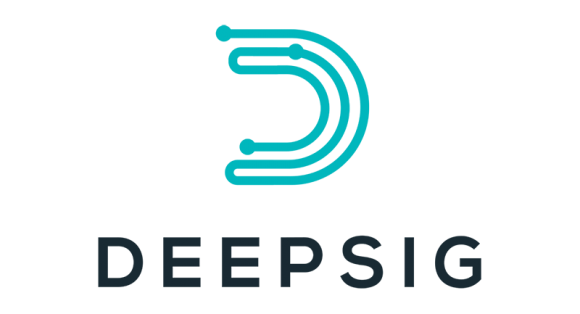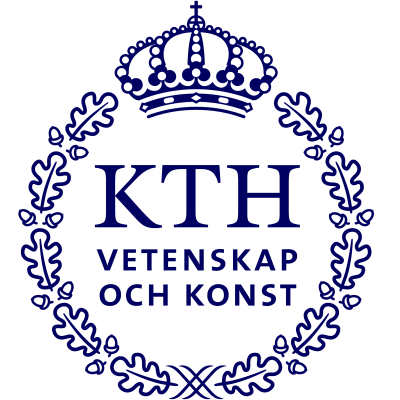Demonstrations
D1: Joint Geometric and Probabilistic Constellation Shaping With MOKka
Time: 12:30-16:00
Location: Digital Futures Hub and Room F2
A Universal Deep Neural Network for Signal Detection in Wireless Communication Systems:
Andrej Rode (Karlsruhe Institute of Technology, Germany); Shrinivas Chimmalgi (Karlsruhe University of Technology, Germany); Benedikt Geiger (Karlsruhe Institute of Technology, Germany); Laurent Schmalen (Karlsruhe Institute of Technology (KIT), Germany)
Abstract:
Machine learning for optimization of the physical layer is currently a popular research topic. To aid research in this field, we introduce our Python library MOKka. We summarize the currently available signal processing modules in the library and explain our design rationale. In order to showcase the utility of this library, we have implemented a demo on joint geometric and probabilistic constellation shaping with a switchable channel model and interactive plotting and controls.
D2: Real-Time FPGA Demonstrator of ANN-Based Equalization for Optical Communications
Time: 12:30-16:00
Location: Digital Futures Hub and Room F2
Demonstrator: Jonas Ney (RPTU Kaiserslautern-Landau, Germany); Patrick Matalla (IPQ at Karlsruhe Institute of Technology, Germany); Vincent Lauinger (Karlsruhe Institute of Technology, Germany); Laurent Schmalen (Karlsruhe Institute of Technology (KIT), Germany); Sebastian Randel (Karlsruhe Institute of Technology, Germany); Norbert Wehn (RPTU Kaiserslautern-Landau, Germany)
Abstract:
In this work, we present a high-throughput field programmable gate array (FPGA) demonstrator of an artificial neural network (ANN)-based equalizer. The equalization is performed and illustrated in real-time for a 30 GBd, two-level pulse amplitude modulation (PAM2) optical communication system.
D3: DNN Anomaly Detector in the Network Data Plane
Time: 12:30-16:00
Location: Digital Futures Hub and Room F2
Demonstrator: Justin Tan and Siddhartha Siddhartha (AMD, Singapore); Haris Javaid (Xilinx, Singapore); Mario Baldi (Politecnico di Torino & Cisco Systems, Italy)
Abstract:
In this demo, we show how packet processing pipelines can be augmented with DNN inference engines on devices readily available in the market today. We share a network security case study, where we train a DNN-based anomaly detector that classifies active traffic flows as either malicious or benign using per-packet inference. Our implementation runs on an AMD Alveo(TM) U250 FPGA card, and is capable of servicing network traffic of up to 125 Mpps on 100 GbpE links.
D4: Demonstration of Machine Learning Based Receiver for MISO System Using Software-Defined Radios
Time: 12:30-16:00
Location: Digital Futures Hub and Room F2
Demonstrator: Arhum Ahmad (INDIA & IIT ROPAR, India); Satyam Agarwal (Indian Institute of Technology Ropar, India)
Abstract:
Multi-antenna transmission plays a pivotal role in 5G-New Radio (5G-NR). The latest communication systems, including cellular networks and WiFi access points, consist of multiple transmitting antennas. These antennas collectively transmit shared information to the designated receiver, necessitating the use of sophisticated receivers. We present a machine learning (ML) based radio receiver implementation for a fully wireless Multiple-input–single-output (MISO) communication system using software-defined radios (SDR). MISO system results in significant improvements in received signal gain as the number of antennas increases. However, perfect channel state information (CSI) is required at the transmitter for signal precoding to achieve optimal performance. Here, we designed an ML-based radio receiver that can demodulate signals without any need for CSI. In this study, we showcase our recent implementation of the MISO system on a standard open-source SDR platform, where two antennas send signals that may combine constructively or destructively at the receiver due to varying channels, and an ML-based radio receiver successfully demodulates the combined signal. Also, we validate the results in terms of bit-error rate.
D5: Demonstrating Drill-Down DDoS Destination Detection
Time: 12:30-16:00
Location: Digital Futures Hub and Room F2
Demonstrator: Samuel Kopmann and Timon Krack (Karlsruhe Institute of Technology, Germany); Martina Zitterbart (KIT, Germany)
Abstract:
Volumetric Distributed Denial of Service (DDoS) attacks are still an imminent threat in today's Internet. Their impact on provided services continuously increases due to an ever-growing amount of connected devices and rapidly increasing data rates. At high data rates, fine-granular traffic monitoring (e.g., micro-flow-based) is computationally infeasible without packet sampling. To avoid packet sampling, 7D utilizes coarse traffic monitoring, highly aggregating arriving traffic in only two dimensions, the source and destination IP address space. From monitored two-dimensional traffic distributions, a Convolutional Neural Network determines IP subnets receiving attack traffic. Only identified subnets receiving attack traffic are iteratively reinspected, providing a top-down drill-down approach through the IP address hierarchy, enabling sub-second DDoS destination detection with coarse traffic monitoring.
D6: LLM for 5G: Network Management
Time: 12:30-16:00
Location: Digital Futures Hub and Room F2
Demonstrator: Ali Mamaghani, Ali Nourian, Negin Mohtaram, Alireza Shokrani and Seyed Mohsen Nasiri (Sharif University of Technology, Iran); Sepehr Kazemi Ranjbar (Sharif University of Technology, Germany); Alireza Mohammadi (Sorbonne Université & EURECOM, France); Navid Nikaein (Eurecom, France); Babak Hossein Khalaj (Sharif University of Technology, Iran)
Abstract:
This demonstration explores the effective incorporation of Large Language Models (LLMs) in 5G network automation, significantly enhancing the process of private network creation without the need for extensive networking or programming knowledge. The demonstration comprises a user-friendly chatbot, adept at translating everyday English queries into actionable 5G commands, and LLMs serving as generative AIs to dynamically generate configurations tailored to the 5G network environment. Our approach relies on the practical application of text classification models and an adaptive feedback loop mechanism, allowing the system to recognize patterns, refine commands iteratively based on real-world execution errors, and strengthen overall resilience. The demonstration comprises two interlinked parts: the development of a chatbot accessible to a wide audience and the utilization of LLMs for dynamic configuration generation. The goal is to exemplify the accessibility of 5G network creation to a broader user base, eliminating barriers for those without extensive technical backgrounds. This comprehensive approach not only simplifies the process but also enhances the system's responsiveness to the varied challenges presented by real-world 5G network scenarios, laying the groundwork for a future where 5G networks are both accessible and adaptable across diverse user profiles.
D7: PoC Implementation of Neuromorphic Wireless Cognition: Gesture Recognition for Robotic Control
Time: 12:30-16:00
Location: Digital Futures Hub and Room F2
Demonstrator: Yuzhen Ke and Mehdi Heshmati (Fraunhofer Heinrich Hertz Institute, Germany); Zoran Utkovski (Fraunhofer HHI, Germany); Johannes Dommel (Fraunhofer Heinrich Hertz Institute, Germany); Slawomir Stanczak (Technische Universität Berlin & Fraunhofer Heinrich Hertz Institute, Germany)
Abstract:
Neuromorphic computing is emerging as a brain-inspired paradigm for low-power artificial intelligence on edge devices through event-based data processing. In this paper, we present a proof-of-concept (PoC) implementation of an architecture for device-edge co-inference that integrates neuromorphic computing and wireless communication. To demonstrate the concept, we present a demo setup for gesture recognition in a robotic control application. The demo setup integrates a neuromorphic sensor (event-based camera), on-device neuromorphic processor performing joint feature extraction (i.e. semantic coding) and channel coding, impulse-radio-based transmission/reception over a wireless channel, and neuromorphic processor for edge inference. In the considered architecture, learning is performed in an end-to-end fashion via the directed information bottleneck principle, which allows to trade task accuracy for communication overhead and implementation complexity.
D8: SPSDN: A Security Platform for SDN Networks With an AI-Based SQL Injection Attack Detection and Mitigation as an Example Service
Time: 12:30-16:00
Location: Digital Futures Hub and Room F2
Demonstrator: Emir Yegnidemir (Technische Hochschule Mittelhessen, Germany); Rahamatullah Khondoker (THM University of Applied Sciences, Germany)
Abstract:
As Software-Defined Networking (SDN) technology continues its rapid expansion, the landscape of security vulnerabilities is expected to undergo significant evolution in the near future [3]. SDN enables us not only to control the network from the centralized controller but it can also be utilized to detect and mitigate cyber-attacks. We proposed in this paper a security platform for SDN networks called SPSDN, which serves as a flexible platform capable of detecting various attack types. An example Artificial Intelligence (AI) CNN-based service for the detection and mitigation of SQL Injection attacks is presented as a demo in this paper. The choice of using a Convolutional Neural Network (CNN) in this scenario is supported by its better performance metrics compared to other models, as evidenced by the CNN's accuracy of 96.43%, precision of 98.41%, and recall of 91.84%. In contrast, alternative methods such as Naive Bayes, SVM, KNN, and Decision Tree yielded varied results, with lower accuracy, precision, and recall scores, highlighting the CNN's robustness in effectively classifying SQL injection queries [6]. The functionality of the proposed solution is demonstrated in a host communication scenario on Mininet. The system leverages a pretrained Convolutional Neural Network (CNN) model, adapted to operate in a Python 2 environment on Ubuntu 20.04.6. The dataset and code for model training are available in [1]. The methodology employed in this project can be summarized as follows: Adaptation of the pre-trained CNN-based model to function within a Python 2 environment on Ubuntu 20.04.6. Development of a POX controller-based system integrating the CNN-based model to detect SQL injection attacks in SDN traffic and subsequently initiating port blocking for the attacker host to mitigate the attack. Future work will involve building additional attack detection methods on top of this security platform, eventually enabling network administrators to conveniently choose their preferred detection method via a user-friendly GUI tool, providing flexibility and customization to meet specific security requirements. In essence, our work not only provides a solution for the current challenge of SQL injection attacks in SDNs but also lays the groundwork for a more resilient and adaptive security platform.
D9: Neural Coded Modulation in Uplink/Downlink NOMA for the 6G PHY Layer
Time: 12:30-16:00
Location: Digital Futures Hub and Room F2
Demonstrator: Adriano Pastore (Centre Tecnològic de Telecomunicacions de Catalunya (CTTC), Spain); Carles Antón-Haro and Bruno Palombizio (Centre Tecnologic de Telecomunications de Catalunya (CTTC), Spain)
Abstract:
We present an end-to-end learned, coded modulation system based on neural networks for uplink/downlink communication, implemented with software-defined radio modules. This realtime demonstrator illustrates the superiority of neural implementations of mappers and demappers in combination with SIC decoding in a NOMA system.
D10: Demonstrating the OmniPHY Real-Time Pre-6G AI-Native Air-Interface Over the Air
Time: 12:30-16:00
Location: Digital Futures Hub and Room F2
Demonstrator: Tim O'Shea (DeepSig Inc & Virginia Tech, USA); Dan DePoy (Virginia Tech, USA); Raj Bhattacharjea (DeepSig Inc, USA); Nitin Nair (DeepSig, USA); Jacob Gilbert (DeepSig, Germany); Tamoghna Roy (DeepSig Inc., USA)
Abstract:
One of the most exciting design considerations today for the 6G Air Interfaces is that of moving to an AI-Native approach for the physical layer. Such an approach offers many significant advantages, such as removing pilots, adapting to local channel conditions or hardware impairments, and even cross-layer optimization for semantic communications. To this end, We demonstrate OmniPHY, our AI-Native Air Interface which can be used today for real-time high rate over the air test and validation of pre-6G physical layer techniques.
D11: Demonstration of FPGA-Accelerated ML-Based Wideband Spectrum Awareness and Signal Characterization in Real-Time
Time: 12:30-16:00
Location: Digital Futures Hub and Room F2
Demonstrator: Jin Feng Lin, Erika Caushi and Artem Dudko (University of Massachusetts Dartmouth, USA); Todd M Morehouse, Jr. and Charles Montes (University of Massachusetts, Dartmouth, USA); Eric Noah Savage and Ruolin Zhou (University of Massachusetts Dartmouth, USA)
Abstract:
This paper proposes a sophisticated spectrum awareness tool that introduces a novel approach at the intersection of spectrum sensing and signal characterization, leveraging an optimized 1-dimensional (1D) faster region-proposal convolutional neural network (FR-CNN). Our research addresses the evolving challenges in cluttered radio frequency environments, where multiple transmissions occur simultaneously. The FR-CNN model is tailored for 1D signal processing, incorporating machine learning for precise angle of arrival (AoA) estimation. Notably, our framework outperforms conventional methods in terms of efficiency and accuracy, extending to signal characterization through over-the-air testing with software-defined radios (SDR). Additionally, our approach demonstrates adaptability to wideband signals, enabling effective analysis and classification across a broad range of frequencies and waveforms. In a complementary study, we evaluate machine learning methods for AoA estimation in wireless communication systems. Despite a slightly higher error rate, the machine learning algorithm demonstrates robustness and stability in synthetic and over-the-air (OTA) test scenarios. The sensing results will be displayed in real-time in the frequency domain, indicating the signal's angle of arrival, center frequency, bandwidth, and modulation type.











